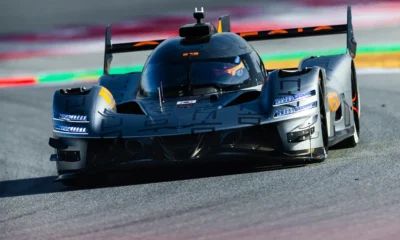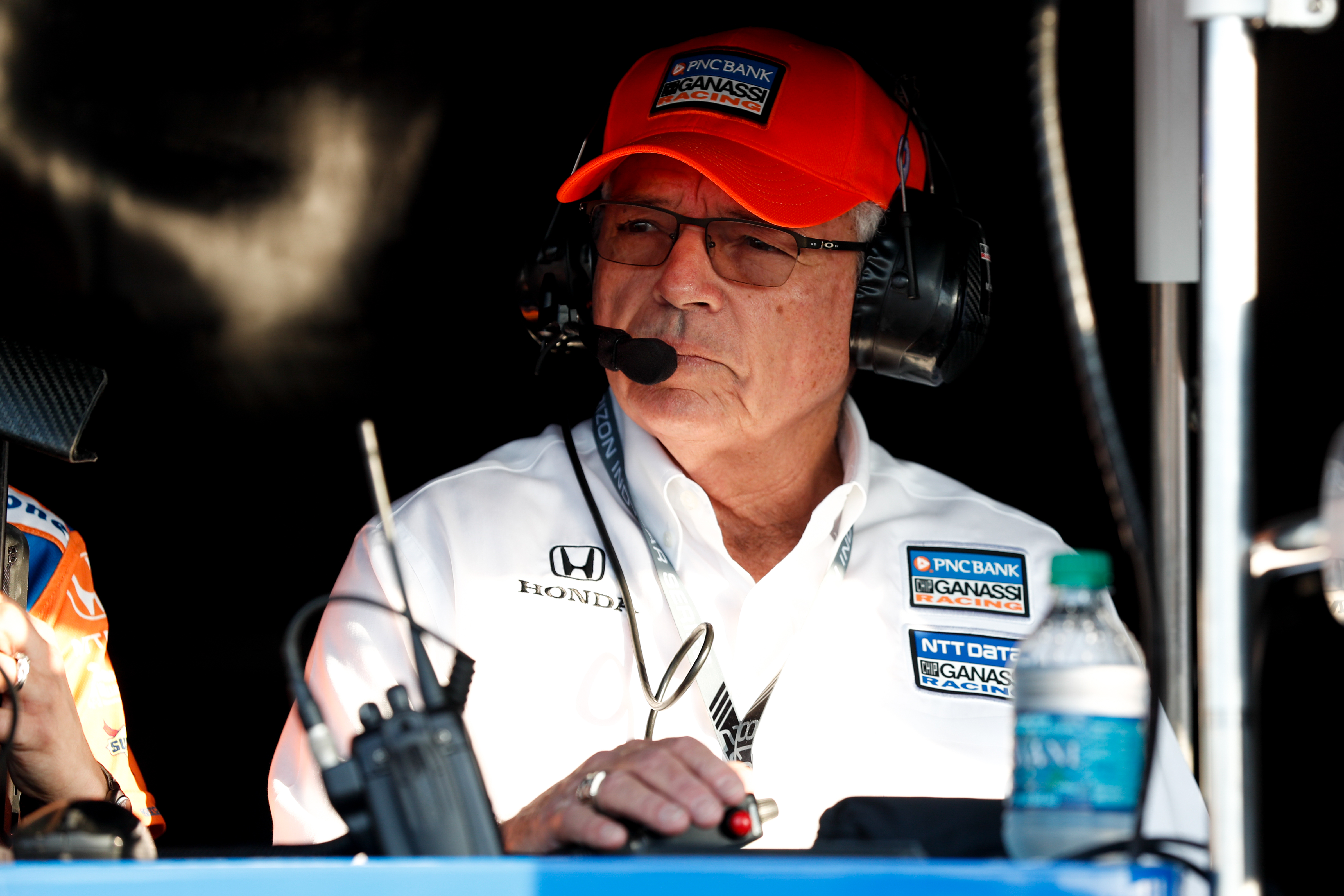
Photo: IndyCar
A race strategist morphs into a Swiss army knife in any sports car race.
In any event, he or she must know the regulations, pit stop delta, minimum and maximum drive times, race length, and when to pit for full service versus taking fuel only or either zero or two Michelin tires.
And then, following all the pre-race preparation, they have to be able to throw all that out the window and think on the fly to adapt to different circumstances as the race evolves.
Sounds simple, right?
Sportscar365 spoke to three veteran race strategists who, in addition to either team principal or program manager roles with their team, have also spent a majority of their careers on the pit box.
*Mike Hull, program manager, Chip Ganassi Racing Teams
*Peter Baron, team principal, Starworks Motorsport
*Bill Riley, team principal, Mercedes-AMG Team Riley Motorsports
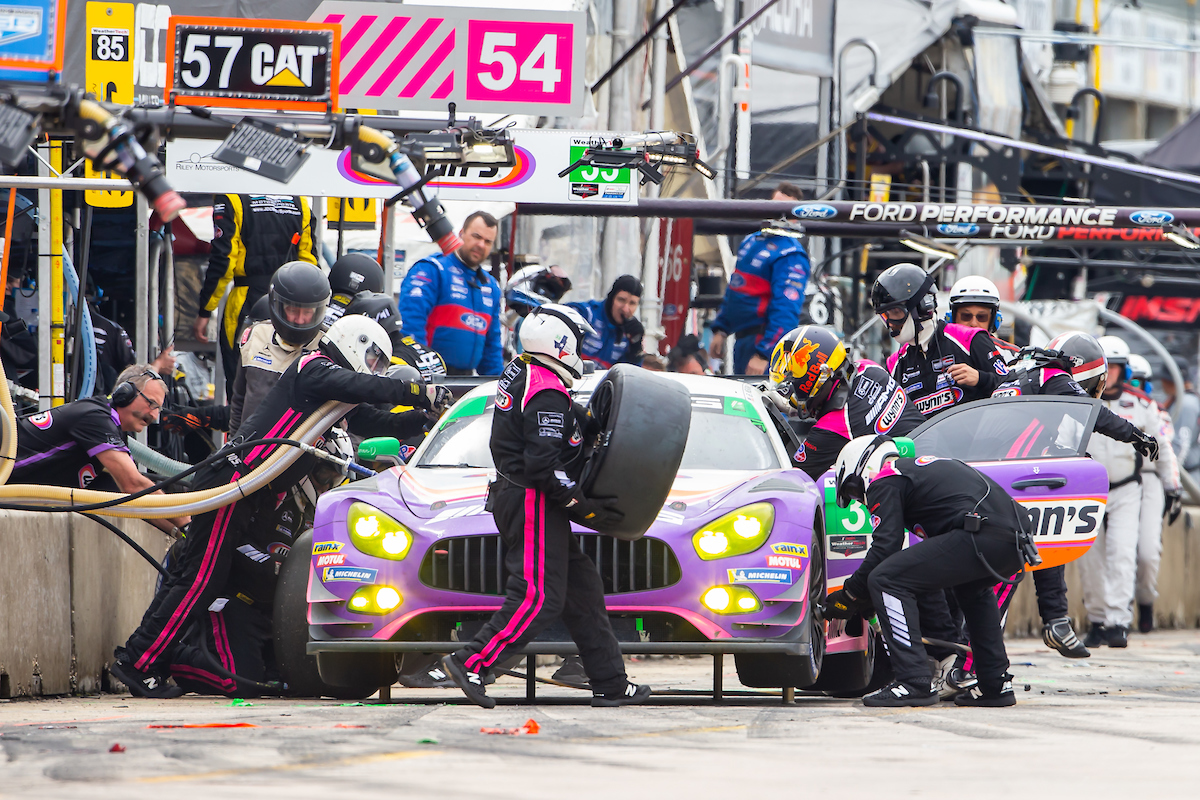
Photo: Michelin
What piqued your interest in becoming a race strategist, or adding strategist to your role within the paddock?
Mike Hull: “I think in one sentence, being part of the race. With my background of working on, then driving, race cars, I have a good understanding of what the driver senses. That can help make a difference if you understand what the driver is capable of doing.
“I’d learned from Chip, who is so astute as a strategist himself, and saw how he views a race globally. He suggested I spot for (Juan Pablo) Montoya. So spotting, you could learn about strategy. You can visually see how track position is made. You can see pit stops, how a driver gets through traffic, or how he or she can make track position at the end of a run on used tires.”
Peter Baron: “When I stropped driving in 2004, I still had the urge to be an integral part of the team and part of the team’s success or failures. Back then, it did not seem like too many teams had a ‘strategist’ position. It was usually an engineer running the car who worried about the car going fast first, then about strategy once the race began. I was able to jump in and dedicate myself as a full-time strategist and not worry about anything else. I believe this was a massive help.
“I can remember nights in bed before a race, lying awake thinking of strategy options for races and what new ideas we could try if the opportunity presented itself.
“One of these crazy ideas I thought of in bed presented an opportunity in the Laguna 2008 DP race with Ryan Dalziel in the car, which resulted with this strategy and probably the best pass in GRAND-AM history. In one move, Ryan passed both Scott Pruett and Marc Goossens at Turn 5 at Laguna, and that resulted in our first Prototype win. To this day, Ryan and I still refer to that option as the ‘Laguna’ option!
“After that win, I could not get enough of thinking up crazy strategies and calling races. Like in ‘Happy Gilmore,’ he needs to go to his happy place. Mine is on a timing stand calling a race. I absolutely love it. I still need to do Bathurst 12 Hour, and Nürburgring 24, so this is a shameless plug: I’m open for those races if anyone wants help!”
Bill Riley: “In ’96, when we started running the (Riley & Scott) Mk III in IMSA, my dad (Bob) and Mark Scott ran the car and then I started getting more and more involved. Then I ran my own car in ’97, I really enjoyed that part of it. You’re so connected to the outcome. It’s a lot of pressure that the right calls are made.”
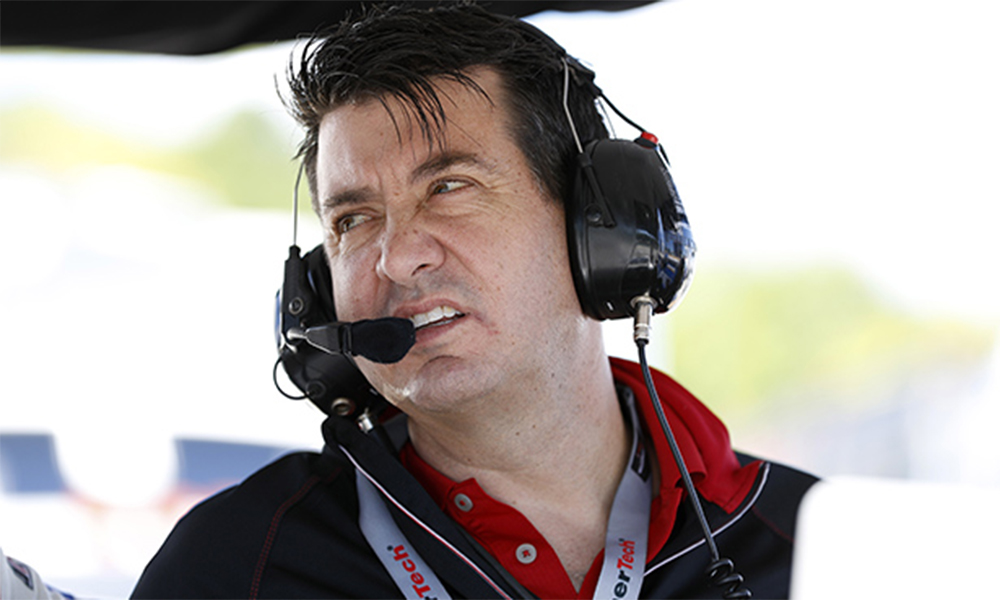
Photo: Mike Levitt/IMSA
What are the keys, in your mind, to being a good race strategist? How adaptable do you have to be to changing circumstances?
MH: “You have to have a group of people that sit down before the race and talk your way through things that could happen. The first time you encounter it, then (it) isn’t the first time you have. So when you react, everyone knows most likely what the reaction will be.
“You don’t want to be reliant on off-strategy calls. Because like or not, the reason you’re doing that is to make up for inefficiency, wherever that is. You’re on your heels right away. You have no way of gaining back the standard strategy.”
PB: “I love math. In college, I took all the math classes I could to boost my GPA. Strategy all comes down to numbers and calculations; it’s a bit like ‘The Matrix,’ and watching numbers go by fast, and you need to make sense of it all. Common sense and the ability to perform quick math calculations are key. I used to sit with the drivers and plan how the race would unfold; now though, it’s about understanding all the numbers involved with performance, fuel consumption, pit stop information and historical and applied races logic.
“You really cannot prepare for what unfolds in a race. I remember Bill Walsh, the coach of the 49ers, used to write down the first 20 plays he would run in a game and not deviate. Racing could not be more opposite. It’s like a game of chess. You can have a plan, but one unforeseen variable can throw that plan straight in the garbage. Like chess, you really need to know your abilities and your opponent and be ready for anything thrown at you, and have a plan in place for that.
“Sometimes, you may deploy a crazy strategy because you have a legal background to exploit any rule book loopholes. People may look at you like you’re an alien with five heads, until it all plays out! It’s amazing when you influence a race with a good strategy call.”
BR: “There’s not a set plan per se because you never know where the yellows will go. I always say, the best plan is not to have a plan! I’ve seen teams before where they try to force the plan they came up with in the pre-race meeting onto the race track. I’ve always said that we have to be ready to throw the plan we had out the window.”
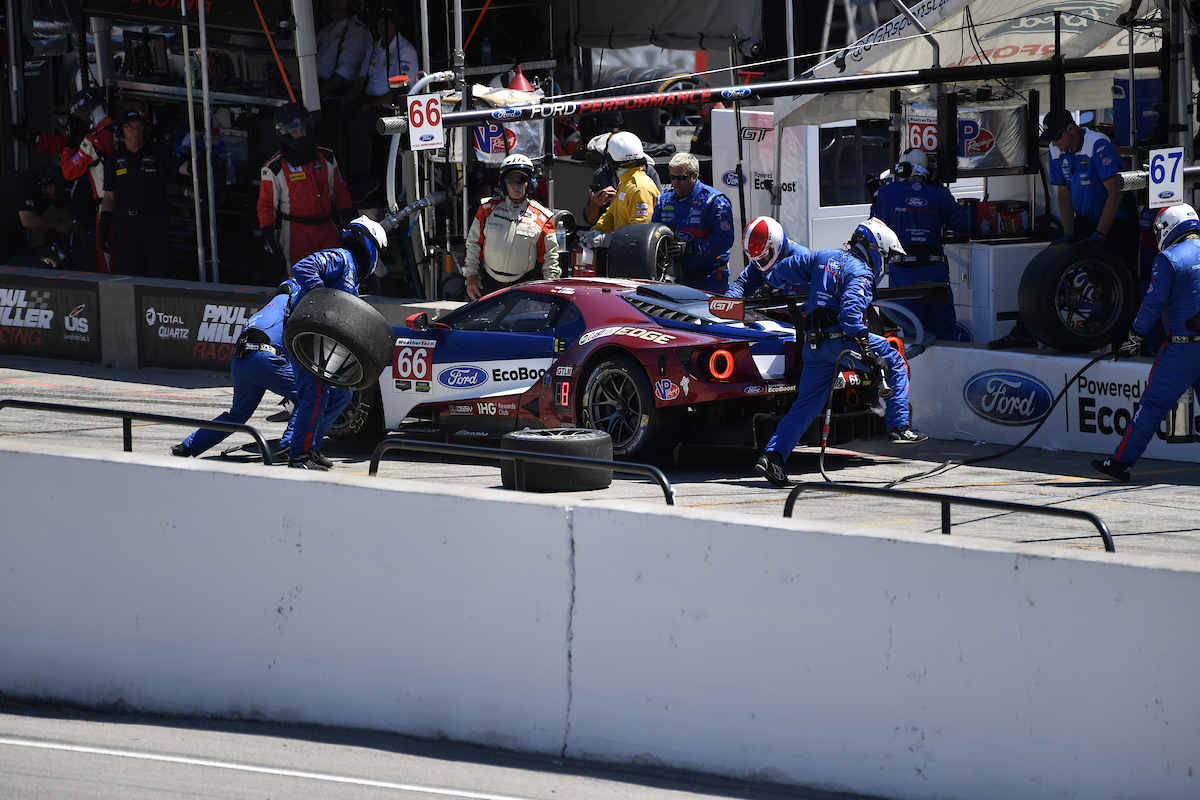
Photo: Michelin
How different is calling a race with only two drivers and known quantity drivers in a shorter race distance, vs. a longer race where you’re adding extra drivers?
MH: “It’s based on the race length, as you pointed out. You want to have your drivers be close to the equal length. If you pit early and change drivers, you’re asking your trained professional to do almost three hours, and you don’t want to do that.
“In GTLM, you have two drivers that are mentally, physically, and ability-wise all equal. You’ll take the driver change when it seems to make sense to get the second driver equally as fresh. With three drivers it goes easier, with single, double and triple stints. And that may be predicated on a yellow.”
PB: “There isn’t much difference with a short race on calling strategy. The goals and themes are the same, only the stakes are higher because every pit stop counts. In a 12 or 24-hour race, you can go fairly conservative until the last four hours of the race. If you pit off cycle or stay out when the field pits, you have plenty of time to get back to the plan for the last four hours.
“In a sprint race, you have between one to three pit stops and what you do in the first one dictates the remainder of the race. In the longer races, you always go for the win. No one really cares about finishing fourth at Daytona, and you can make up points if the gamble went bad.”
BR: “It’s even easier in IMSA this year because the Silver driver starts in GTD class. In Sebring, we had Tyler Hook, our race engineer and Chris Miller, our data engineer, running the times to make sure we don’t screw up our minimum or maximum drive time on three drivers. At Mid-Ohio, it’s cut and dry. Ben [Keating] starts the race and at X point, he gets out.”
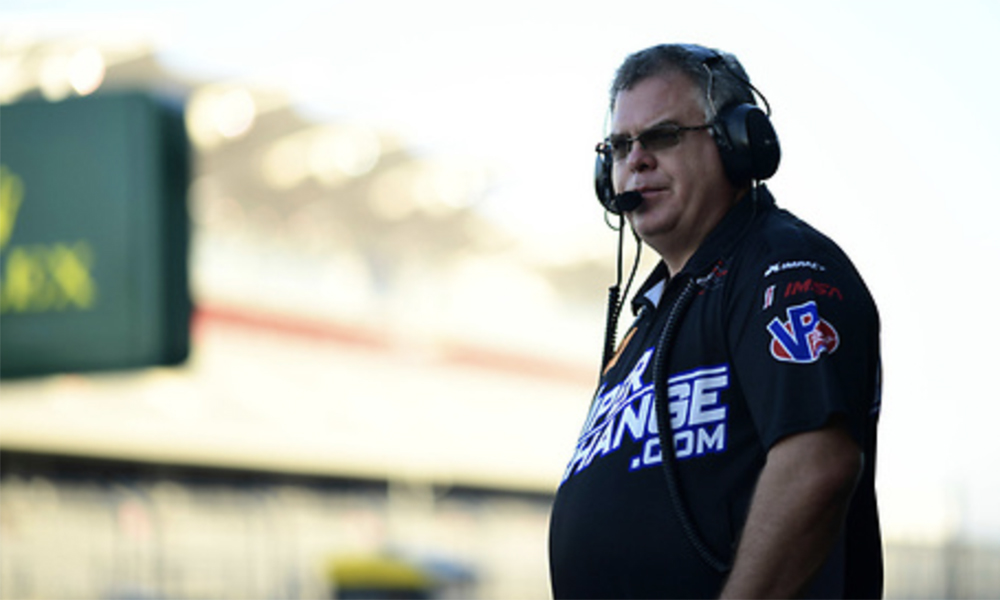
Photo: Rick Dole/IMSA
As your team has been in both the Prototype and GT ranks, how different are calling those races depending on being in top class vs. a GT class?
MH: “The DPi cars pit much sooner than we do, so under green that’s an easy call. The reality is what Michelin has done now is furnish tires for the entire field. In doing that, they’ve improved the competitive nature of the GTD cars enormously. So we have a tough time getting around GTD cars now. It’s all due to the tires, not the BoP rules, or any other things changing or technology advancing… unless you consider the technology advancing to be the tires.
“So in GTLM, we have a bigger hill to climb with the GTD cars. Everyone will come in and out at same time! Unless someone’s just pitted, they’ll pit again. We have a tough time getting around those guys. The reason is, they’re racing each other.
PB: “Unfortunately these days there isn’t much difference. When the pits didn’t close and there weren’t lap down wave-bys, it was crazy intense with strategy, especially in GT. You’d have to track the prototypes to see who pitted and when to know where you were on the overall line. There could be massive gains or losses.
“Now the only real variables are fuel stint length and tire degradation. Some prototype teams played with different left side only or rears only with a short fill of fuel at Long Beach. Not to mention there’s the 40-second fuel fill time.”
BR: “GT is a lot harder than prototypes to call a race. With the prototypes, you don’t have to worry about the wave-bys. Not as cut and dry. There’s always more under yellow to get right in GTD. Prototype is cut and dry. Pace car picks up the leader. It’s not a lot harder, but you have to be a lot more on the ball in GT versus Prototype.
“With Jeroen (Bleekemolen) and Ben (Keating), they’re both sharp on race strategy behind the wheel. With them, Tyler who’s been with me since 2009 on the box and Chris since about 2012, I’m not on an island!”
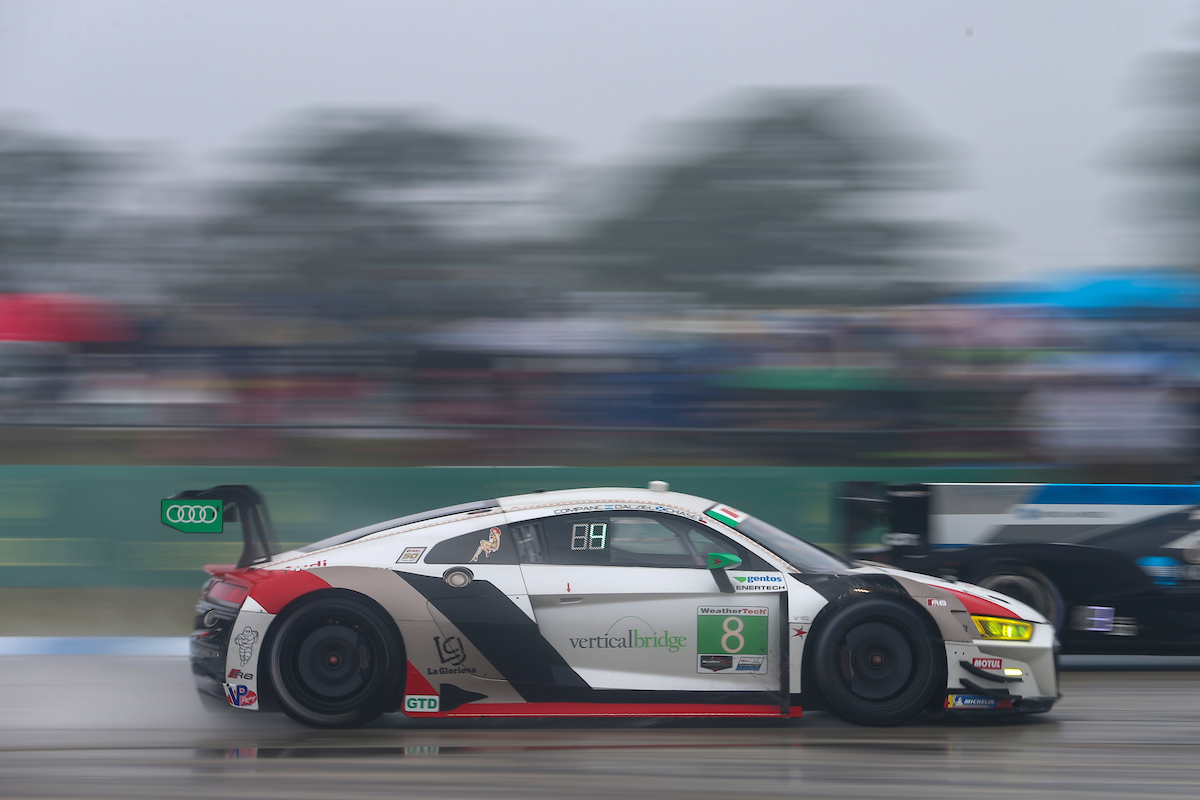
Photo: Michelin
On the Box
The Acura Sports Car Challenge at the Mid-Ohio Sports Car Course is the first “standard length” IMSA race of two hours, 40 minutes this year. It comes after races of 24 hours, 12 hours and 100 minutes.
Theoretically, this poses the first straightforward two-stop race for all WeatherTech Championship classes this season. Emphasis on ‘theoretically.’ But as these three veterans have explained, the straightforward plan is always subject to change!























